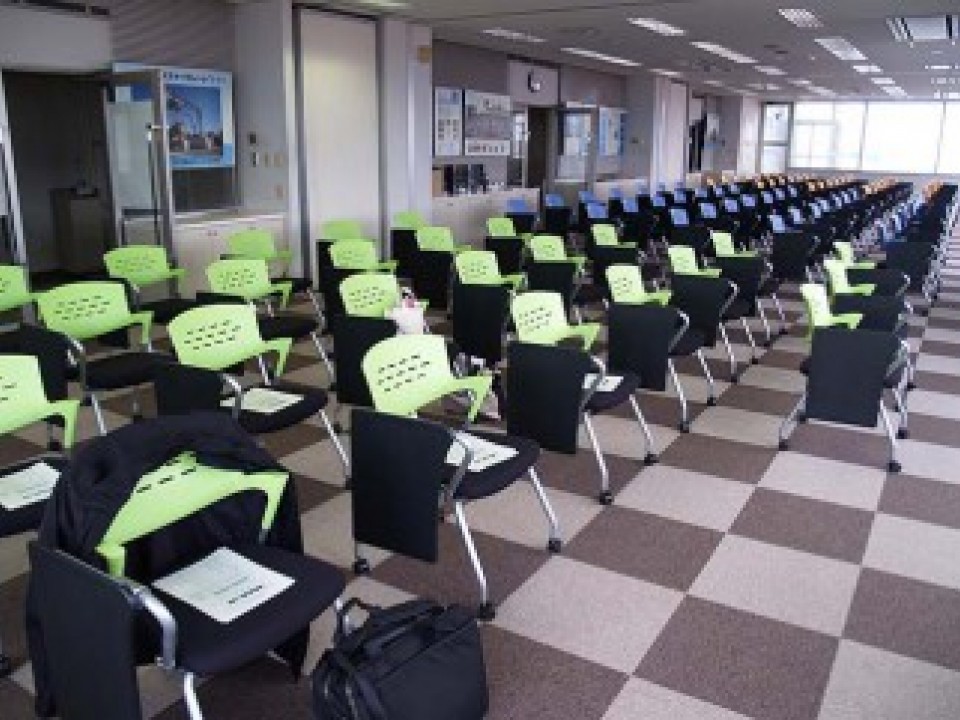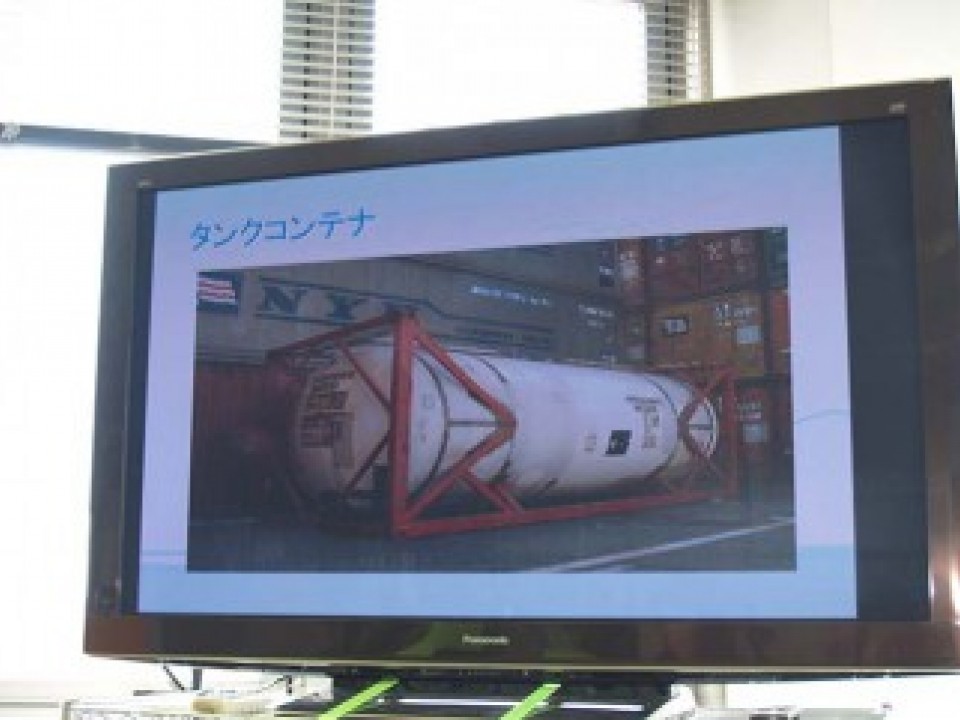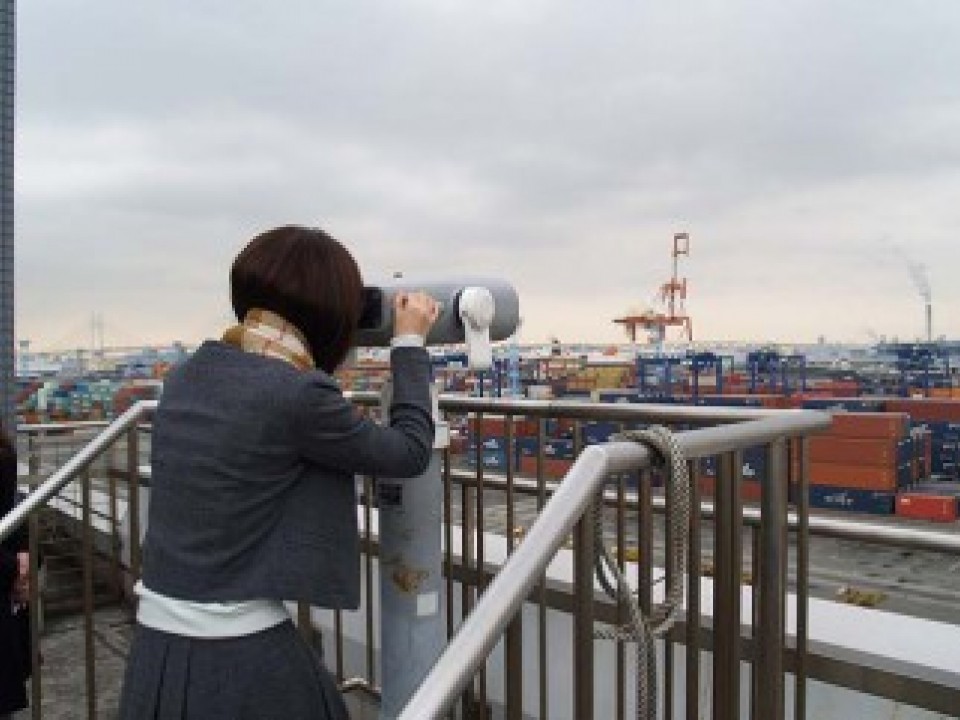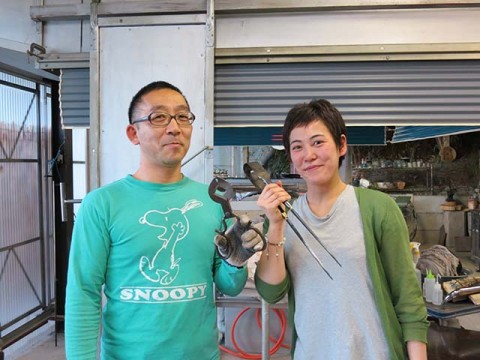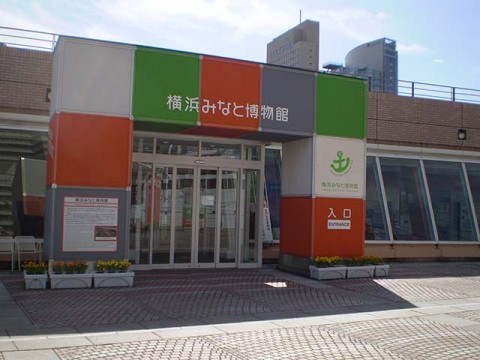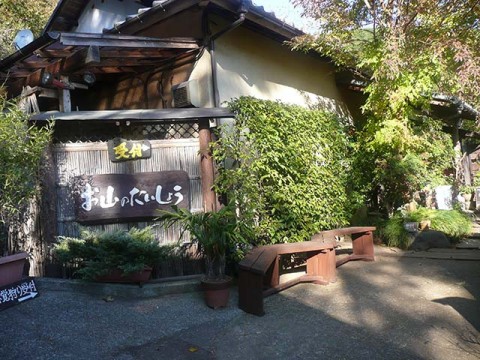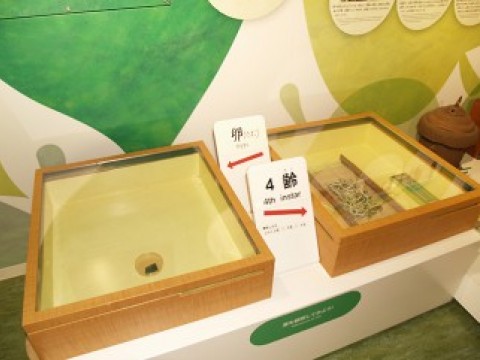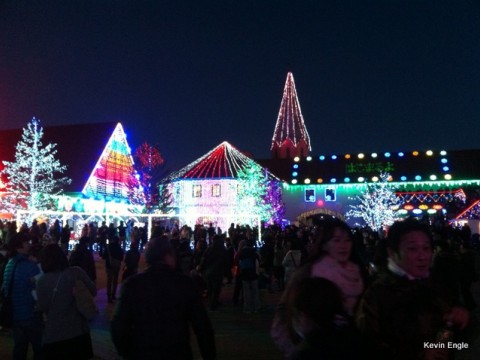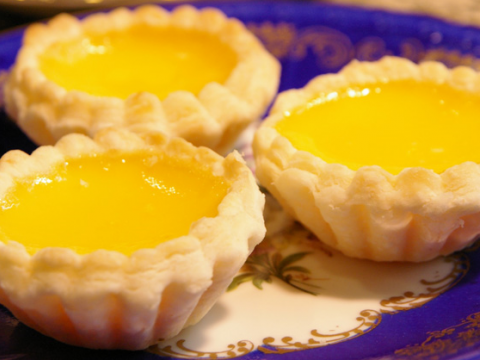Daikoku Pier C-4 Container Terminal - Port of Yokohama
The symbol of a trading nation!
A visit to a container terminal - You can gaze at piles of containers and huge cranes from the window
For some people, the Hikawa Maru ocean liner or the passenger ship terminal may come to mind when they think of the Port of Yokohama, but in fact it is the trading port that serves as the hub of Japan. For today’s report, I visited the study facility at the Daikoku Pier C-4 Container Terminal in the Port of Yokohama.
First of all, at the building entrance, a guide showed me the way up the stairs to the 5th floor, where the study facility is located. I was guided to a room with more than 100 chairs in rows. Here, over 100 people can assemble at the same time (photo 1). When I looked towards the window, the container yard was full of piles of containers. Huge cranes and other sights can also be seen.
This time there were seven participants including myself. If you are a private group of less than 30, you need to make a tentative reservation via telephone or the website, then send the application form by email or fax. In this way, even visits by one person are possible. Parties of 30 persons and over are treated as large groups.
Reservations are accepted from the beginning of the month that is two months prior to your intended visit. In the summer vacation season the facility is reportedly quite crowded with family groups, so it might be good to bear that in mind if you visit during that time.
The people working as guides here are retirees who have experience in work related to the Port (photo 2). We listened to an explanation of the Port of Yokohama and the container terminal, which lasted around 20 minutes, and then watched a video on the Port of Yokohama, called “The Port of Yokohama that Supports our Lives”, for about 25 minutes (photo 3).
We learned that Daikoku Pier is one of the three piers in the Port of Yokohama that has a container terminal (the others being Minami Honmoku Pier and Honmoku Pier); that the Port of Yokohama handles excessive exports; some trivia about the Port and various things about the container terminal. We also heard that over 99% of trade freight uses ships.
The gantry cranes, where the operator’s seat is 50m above the ground
After the explanation finished, we moved out onto the terrace and studied the appearance of the container terminal, as well as the panoramic scenery (photo 4). The terrace is equipped with binoculars, so you can observe in close detail the process of the gantry cranes on the quay unloading the containers from the ships, and piling them up in the container yard (photo 5). Incidentally, the operator’s seat in gantry cranes is 50m from ground level. For me, with my fear of heights, just imagining it when I looked at the crane operator through the binoculars gave me the shivers.
In the container yard, a transfer crane were unloading containers within the terminal. These cranes play an active role in storage of the containers and maintenance of the yard.If you take a broad view of the containers and raise your angle of vision, Tsurumi Tsubasa Bridge pops into view (photo 6). Yokohama has many bridges that were designed with consideration for the urban scenery. This is a recommended spot not only for the containers but for enjoying the view of the bridge, too.
Finally, there was a question and answer session right up until the time for waiting for the bus. Since we had listened to the explanation while actually viewing the containers from the terrace, and maybe because this group of visitors were quite talkative, we were able to ask many questions.
By the way, visitors who have children with them can receive a free pin badge as a souvenir of your visit. Also, please remember that prior reservation is necessary when visiting the pier, and you need to bring the permission form and name list that you receive after applying with you, or you won’t be able to visit.
>> Kanagawa Travel Info
http://kanagawa-travel-info.com/english/special_report/1430

Kanagawa P.G.T.D.
Japan

